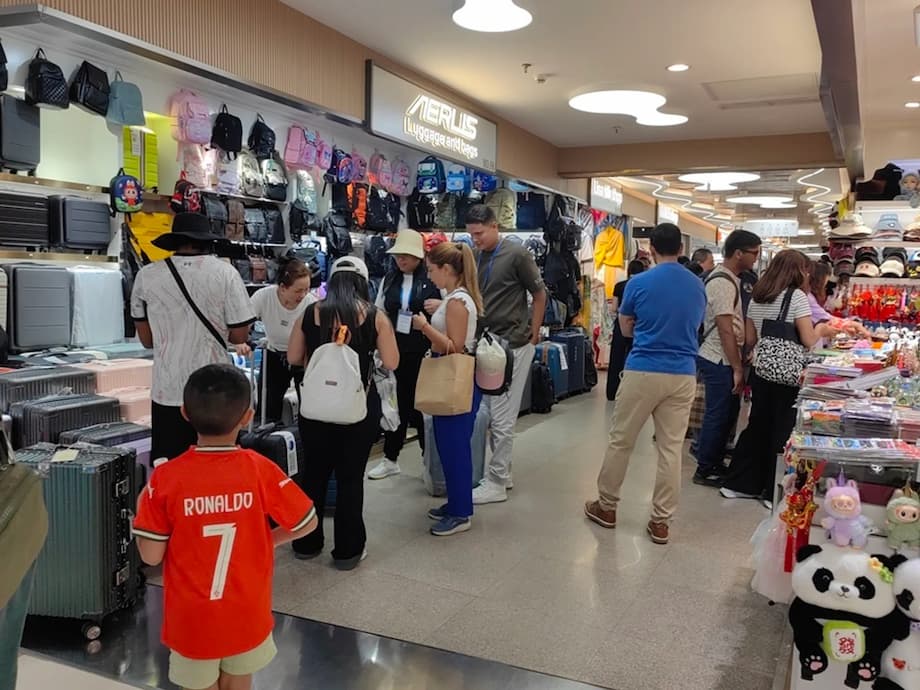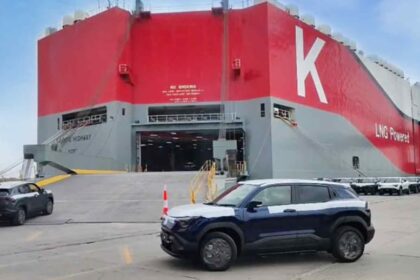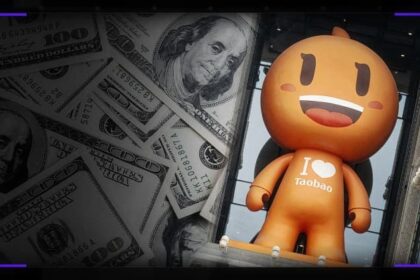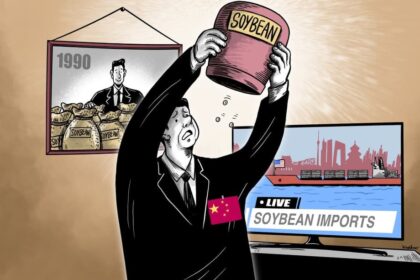A surge of Arabic in Chinese wholesale hubs
In Beijing’s Hongqiao Market, Arabic greetings like ahlan and shukran ring out from shopfronts that once catered mainly to tourists and buyers from Europe and the United States. The change is more than a colorful detail. It marks a broader shift in where Chinese merchants find growth, and how they compete for it. As visa policies eased and U.S. tariffs pushed Chinese businesses to seek new buyers, more traders and retail scouts from the Middle East began flying to China’s sourcing hubs. Merchants responded by learning Arabic and Persian, revising product catalogs, and tuning service and packaging to regional tastes.
- A surge of Arabic in Chinese wholesale hubs
- Why the pivot is happening now
- Language and culture as a business tool
- What China sells, what the region needs
- Digital commerce from factory floors to Saudi shoppers
- On the ground: brands, markets, and state backed platforms
- Trade corridors and a changing map
- Geopolitics, risks, and limits of influence
- What this means for buyers and sellers
- Key Points
Yiwu, in Zhejiang province, has long been a magnet for global small goods trade. Over the past two years, it has become a classroom for the China Middle East pivot. Yiwu International Trade City organized free Arabic lessons that focus on trade phrases and order handling. Private schools in the city now run intensive Arabic courses six days a week for sellers of electronics, textiles, and safety gear. Shop assistants say simple phrases help earn trust and bring customers back. Buyers, often in small teams representing wholesalers or online stores in the Gulf, want quick sampling, competitive prices, and assurance on delivery and warranty.
This linguistic shift sits on top of a commercial one. The flow of Middle Eastern buyers to China accelerated as companies looked for resilient suppliers and price flexibility during a period of global uncertainty. Chinese sellers, facing intensified competition in Western markets, saw an opening in the Gulf, the Levant, and North Africa. The result is a dense web of new relationships built in showrooms in Beijing and Zhejiang, and reinforced in free zones and logistics parks from Dubai to Jeddah.
Why the pivot is happening now
Tariffs and trade frictions raised costs for many Chinese exporters, while European supply chains faced renewed pressure from war and shipping risks. Middle Eastern companies, flush with capital and focused on diversification, sought broader supplier networks and faster delivery options. China encouraged outbound commerce and investment that align with regional development plans, particularly in the Gulf, where governments prioritize infrastructure, logistics, and consumer industries.
Trade between China and the Middle East more than doubled over the past decade and a half, rising from less than 170 billion dollars in 2008 to 477.4 billion dollars in 2023. China exports machinery and electrical goods, clothing, automobiles, and consumer electronics to the region. It imports oil and natural gas. Energy still anchors the relationship, with more than half of China’s crude imports coming from Middle Eastern producers. That reliance will likely persist for years, even as China grows its clean energy sector.
Diplomatically, Beijing’s posture has moved from a careful balance to a more assertive wedge strategy, deepening ties across rival blocs and looking to expand space for Chinese influence. It has comprehensive partnerships with Saudi Arabia, the United Arab Emirates, and Iran, and engages through regional platforms like the China Arab States Cooperation Forum and groupings such as BRICS. The policy is commercial at its core. China’s security presence is minimal and still relies on a U.S.-enabled regional architecture. That creates limits, but it has not slowed the growth of trade or the eagerness of merchants to serve new customers.
Language and culture as a business tool
Arabic fluency is becoming a hard skill in Chinese wholesale districts. Classroom drills cover greetings and bargaining, then move to product specs, safety certificates, after sales commitments, and shipping terms. Many merchants still handle technical details in English, but Arabic opens doors in first meetings and smooths the path to repeat orders. It also reduces reliance on interpreters, which cuts cost and speeds decisions on the market floor.
From greetings to contracts
Cultural literacy is as vital as vocabulary. Merchants adjust schedules for prayer times, learn etiquette around meetings and hospitality, and ensure garments and cosmetics meet local standards. Food related items require halal compliance. Even product photography gets localized, with imagery and color palettes tailored to Gulf and North African tastes. Sellers who invest in these details report faster closures and fewer misunderstandings once goods arrive.
Training is widening beyond language. Business associations in Yiwu and other hubs organize briefings on Middle Eastern customs rules, labeling, and product testing. Exporters swap notes on preferred payment options by country and on how to structure deposits and balance payments to reduce risk. The message is simple: respect the buyer’s culture, align with local regulation, and remove friction at every step.
What China sells, what the region needs
The structure of trade reflects complementary needs. Middle Eastern economies buy machines and parts to build out infrastructure, textiles and fashion to feed thriving retail, and a widening range of appliances, smartphones, and accessories. Chinese carmakers, carried by advances in batteries, software, and supply chain scale, are courting Gulf buyers with competitive pricing and after sales service programs. In return, Chinese refiners and petrochemical players depend on crude and natural gas from the Gulf and Iraq to keep factories and fleets running at home.
Industrial safety has become a growth niche. Yiwu merchant Ye Dawei saw demand surge for protective clothing, gloves, and helmets, as Middle Eastern countries tightened labor rules and construction accelerated. His firm now ships to Egypt, Saudi Arabia, the UAE, and Jordan. The pitch is practical: rugged gear adapted for heat and sand, backed by consistent quality and replenishment schedules that match big project timelines.
Consumer categories are evolving as well. Chinese brands that once sold mainly through distributors are building their own channels. Electric vehicle makers are opening showrooms and offering extended service packages. Beauty and personal care brands tweak formulations for local climate and preferences. Toy and collectibles companies experiment with pop culture tie ins and mall pop ups. Each move pushes sellers closer to the consumer and slightly away from pure wholesale.
Digital commerce from factory floors to Saudi shoppers
On the online front, entrepreneurs are stitching together factory capacity in China with warehousing and last mile delivery in the Gulf. One China based team, ET Global, built a model that relies on warehousing in both China and Middle Eastern hubs. Orders from Saudi shoppers route through local fulfillment centers, cutting delivery times and customs friction. The approach borrows heavily from China’s domestic ecommerce playbook, then adapts it to local conditions.
Execution still faces hurdles. Delivery fees remain high in parts of the Saudi market. In some segments, cash on delivery persists, which raises return rates and complicates cash flow. Mobile payment options are expanding but are not universal, so merchants often offer multiple choices, from cards to bank transfers to regional wallet services. Return handling and warranty processing need careful planning, since trust in after sales support is still developing in pure online purchases.
Dubai sits at the center of these flows. Cargo arrives in Jebel Ali or through air freight and moves on to the wider region. During recent tensions, Chinese shipments into Dubai’s logistics hub rose on a yearly basis as traders stocked essentials and electronics. Bear Huo, China general manager at the fintech firm FundPark, said Chinese sellers still see promise in the region despite risks.
‘Chinese merchants are relatively optimistic,’ Huo said.
Business leaders remain cautious about exposure to sanctions and routing through sensitive waters. Shipping has slowed at times near the Strait of Hormuz and flight schedules saw trims. Chinese firms selling consumer goods avoid direct trade with Iran to stay clear of secondary sanctions, while authorities organized evacuations when needed. The opportunity in Gulf markets is strong, but operators weigh logistics, legal exposure, and insurance costs on each route.
On the ground: brands, markets, and state backed platforms
Chinese institutions have followed their customers. Yiwu International Trade City opened a branch market in Dubai in 2022, giving sellers a permanent base closer to buyers. The market published its 2024 annual report in Arabic to speak directly to investors and partners in the region. It is a signal that Arabic is not just a sales tactic, it is a language of corporate communication and capital raising.
Chinese corporate presence in the UAE has expanded to more than 15,000 enterprises. Car maker BYD is gaining showroom share with battery focused models that fit city driving and ride hailing fleets. Pop Mart, the collectibles brand, found an audience among young shoppers and tourists. These companies pair digital campaigns with mall experiences, then direct traffic back to online stores and service apps. Together with traditional traders, they form a layered presence that ranges from wholesale halls to flagship stores.
Trade corridors and a changing map
Global trade patterns are shifting as companies reduce concentration risk and governments harden their approach to national security and critical supply chains. Scenario work by strategy researchers shows that corridors linking China with emerging markets tend to be more resilient than long distance trade with advanced economies when fragmentation rises. In those futures, China’s trade with the Middle East and other emerging markets keeps growing even if flows to Western markets slow, because the corridor combines energy, consumer demand, and infrastructure spending.
Shipping disruptions in the Red Sea and nearby waters tested this resilience. Traders re routed cargo and absorbed higher insurance costs, but the Gulf’s logistics network kept moving. Dubai, Abu Dhabi, and Dammam continue to position themselves as redundancies for one another. The region’s ports and free zones compete to capture transshipment and value added services, which gives Chinese exporters multiple entry points.
IMEC and the race for routes
The India Middle East Europe Corridor, announced in 2023 by a group that includes India, the United States, and Gulf partners, was pitched as an infrastructure chain that connects South Asia to Europe without relying on Chinese capital. Fighting in Gaza and regional tensions delayed momentum. Yet the logic behind IMEC still matters. More corridors mean more optionality for shippers and investors, and overlapping routes can speed recovery when one lane is disrupted.
Private capital is reshaping the ports landscape as well. A global consortium assembled by a major asset manager and the world’s largest container ship operator agreed to acquire dozens of terminals, including a dozen in the Middle East. The deal challenges the established dominance of regional operators and gives vessel owners more control over cargo flows. For Chinese merchants, this could create new gatekeepers and fee structures, but it also expands the range of ports and services that can support rapid delivery to end markets.
Geopolitics, risks, and limits of influence
China’s diplomatic footprint has grown, but it remains cautious on hard security. Beijing helped broker the restoration of diplomatic ties between Saudi Arabia and Iran in 2023 and has proposed new formats for mediation. The war in Gaza, however, exposed the limits of balance. China’s criticism of Israeli actions strained ties with Israeli leaders, even as it sought to signal solidarity with the Global South. China prefers to build influence through commerce and infrastructure rather than military bases.
This approach carries both advantages and constraints. Reliance on a U.S. enabled security order reduces direct costs for Beijing but leaves it exposed to crises it does not control. Chinese trade with Iran fell in the past two years, and firms tread carefully to avoid secondary sanctions. When tensions spike, China leans on evacuation plans and messaging that calls for de escalation while urging continued trade where lawful.
Economists argue that pragmatic stability serves all sides. Yue Su, principal economist for China at the Economist Intelligence Unit, framed the stakes for Beijing and its businesses.
‘A more stable Middle East serves China’s economic and strategic interests,’ Su said.
Merchants, meanwhile, manage day to day risk. They adjust routes, hedge currency exposure, and spread inventory across warehouses. Growth has not erased the reality of geopolitical shocks, but it has encouraged better risk systems. Traders who treat compliance and logistics resilience as core competencies are the ones who keep filling orders when headlines turn.
What this means for buyers and sellers
For Chinese sellers, three moves matter most. First, invest in language and cultural fluency so that discovery and negotiation run on trust. Second, build local partnerships for warehousing, after sales service, and compliance with standards on safety, labeling, and data. Third, diversify logistics routes and payment channels to handle disruptions and avoid undue exposure to sanctions or single points of failure.
For buyers in the Middle East, the opportunity is breadth of choice at competitive price points. The smartest play is to treat China as a diversified source rather than a single supplier. Tighten quality control, use clear contract terms on delivery and warranty, and verify that sellers hold certificates recognized by local regulators. If speed matters, prioritize sellers with inventory in regional free zones. Consider vendor finance or escrow solutions to reduce risk in first orders and then grow volumes as trust builds.
The frontier is moving beyond trade in goods. Chinese investment and partnerships in Middle Eastern infrastructure, digital services, renewable energy, and healthcare are expanding. Tech and med tech firms explore joint ventures, clinical pilots, and regulatory pathways that could bring new services to market. That does not reduce the centrality of oil and manufactured goods in bilateral trade, but it adds new layers where both sides see value. The more those layers are built on transparency and predictable rules, the more resilient the corridor will be.
Key Points
- Chinese merchants are learning Arabic and adapting service and packaging to win Middle Eastern buyers in hubs like Beijing and Yiwu.
- China Middle East trade reached 477.4 billion dollars in 2023, with machinery, textiles, cars, and electronics flowing out of China and energy flowing in.
- Energy security anchors the relationship, and more than half of China’s crude imports come from the Middle East.
- Beijing’s policy has shifted from hedging to a wedge strategy, growing ties with Saudi Arabia, the UAE, and Iran while keeping a low security profile.
- Yiwu International Trade City opened a Dubai branch in 2022 and published its 2024 annual report in Arabic to court regional investors.
- Over 15,000 Chinese enterprises operate in the UAE, and brands like BYD and Pop Mart are expanding through showrooms and malls.
- Digital commerce models link China based factories with Gulf warehousing, though delivery fees and payment options remain challenges in parts of the Saudi market.
- Shipments into Dubai’s logistics hub rose on a yearly basis during recent tensions, while firms stayed cautious about sanctions exposure.
- Research shows corridors between China and emerging markets are resilient, supporting continued growth in China Middle East trade even in a fragmented world.
- Port ownership is consolidating under global players, creating new gatekeepers but also more routing options for Chinese exporters.












